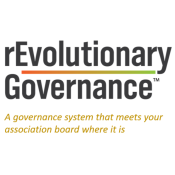
Root Cause Analysis of Dysfunction in Your Board of Directors
In part three of my series on Board of Director’s dysfunction, I want to discuss identifying the root cause of the issues within a board.
The first thing to recognize is that the health of your Board of Directors is systemic and every domain affects the others. (What are the Four Domains? Learn more.) From a physical health perspective, if you’ve got a bad knee, it can cause damage to your hip on the opposite side, which has to compensate. That may lead to low back pain, etc. Similarly, issues in the Cultural domain may create corresponding issues in the Individual, Structural and/or Strategic domains. But you should address the primary issue first – the bad knee – before you treat the hip and low back, which are proximate symptoms to the root cause.
With this in mind, solving the key issue in one domain usually goes a long way in solving all the rest. Identify the primary domain that contains the root cause of illness and address it first. You may not have to address the other areas if you’re able to solve the root cause.
Step One
The first step is to identify the source of the challenge: is it primarily an Individual, Structural, Cultural or Strategic domain dynamic? In addition to our Board Health Test, you could ask yourself:
If all other aspects of the board are in good shape, but the board has no clear purpose, direction or focus, is there a lack of strategic direction at play?
Are there difficult or disruptive members of the board?
Is it a process issue, such as a lack of organization, procedures or clear roles?
Is it a group dynamic, a dysfunctional culture that has developed over time and is passed on from board to board?
“The disease [Bully Infection] has become critical when staff or board members quit or threaten to quit because they “can’t take it anymore.” They just can’t stand being around this person anymore.”
Jeff Arnold
President, Leading Associations
Primary vs. Secondary Causes
Here are examples with issues in multiple domains present, but with the primary driver – the root cause – listed first in bold:
- Individual: A divisive individual could create a factional cultural dynamic, particularly if inadequate structural mechanisms are in place to guide board interactions.
- Cultural: A too casual cultural dynamic might allow a charismatic individual’s personal agenda to drive the board because no structure or strategic focus exists to prevent it.
- Structural: A constituency-based board structure could create a divided culture in which an individual board member believes their fiduciary responsibility is to a constituency and not to the organization as a whole.
- Strategic: Inability to be strategic and future-focused is often a symptom of Individual, Cultural and/or Structural domain dysfunction. That said, if the board is relatively healthy in the other domains, it may have become accustomed to an operational focus because individually the board members are “doers” by nature, culturally they are comfortable with micromanaging operational details, and structurally no process exists keep them big-picture focused.
In the first case, if the individual were removed from the board, the Cultural and Structural domain dynamics could be mitigated or eliminated. In the second example, if the board came to a group agreement to take on a more strategic focus, followed by developing a Strategic Plan, it would have the ability to say no to an individual’s personal agenda that doesn’t fit the organization’s mission/strategic focus. In the third example, if the board were to adopt a competency-based selection process vs. constituency-based representation, the confusion over who board members represent – a constituency vs. the organization as a whole – would be eliminated. As stated in the final example, a board’s inability to engage in strategy is usually the result of challenges in the other domains, or, if not, a failure to transition to a strategic focus due to settling into an operational comfort zone.
Assessment using the four domains of health is a simple, yet highly effective diagnosis tool, which creates a framework for addressing virtually any kind of board challenge.
Is removing barriers to your Board of Directors’ effectiveness a 2019 priority for your organization? If so, contact us for our complimentary Board Health Test to identifying the underlying issues for your board.




